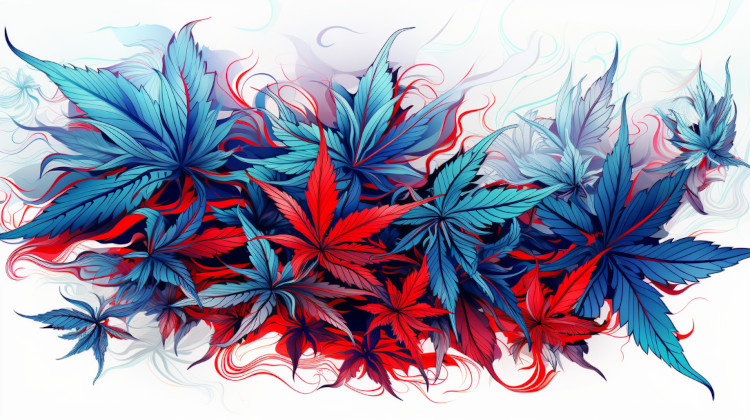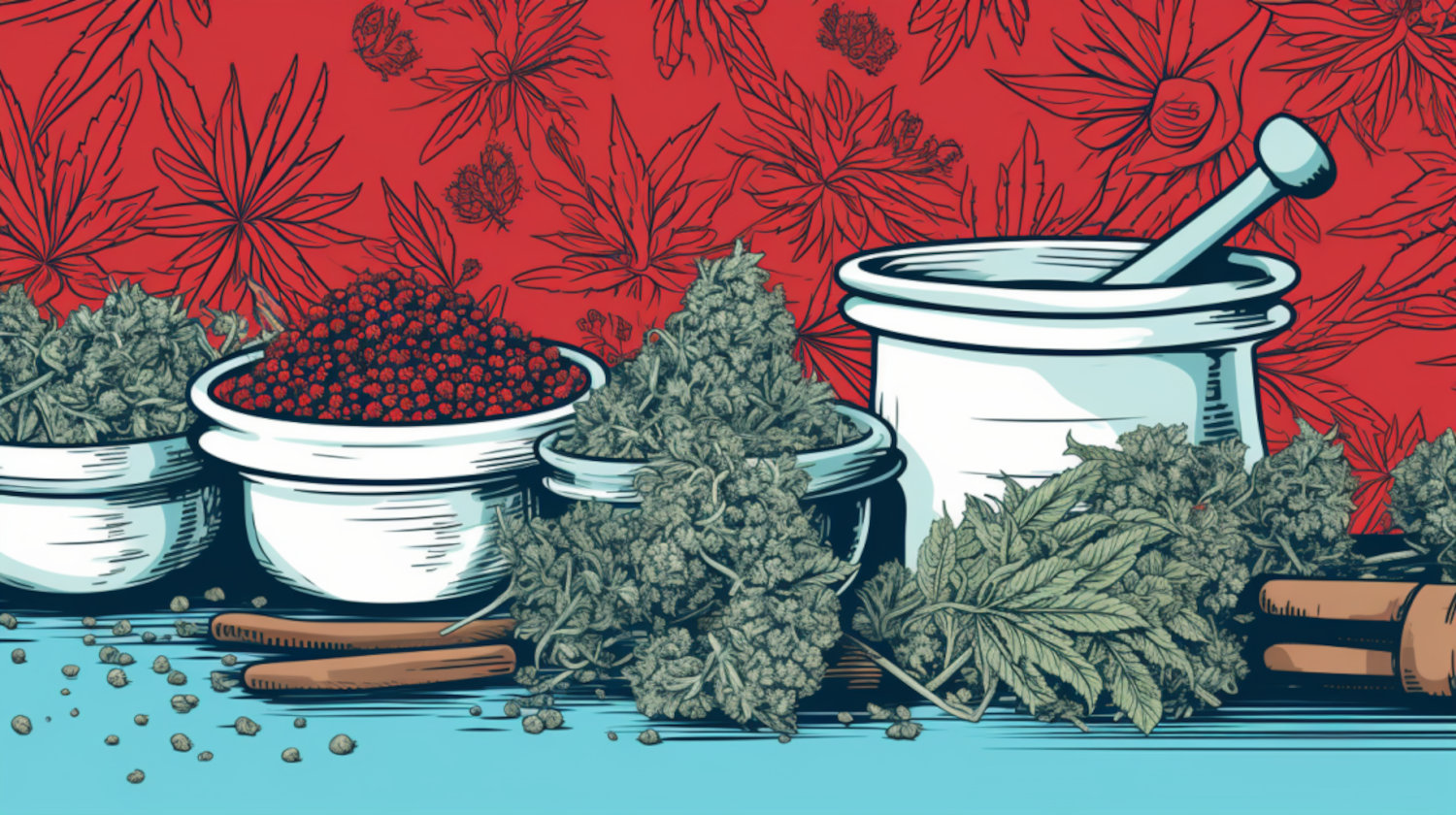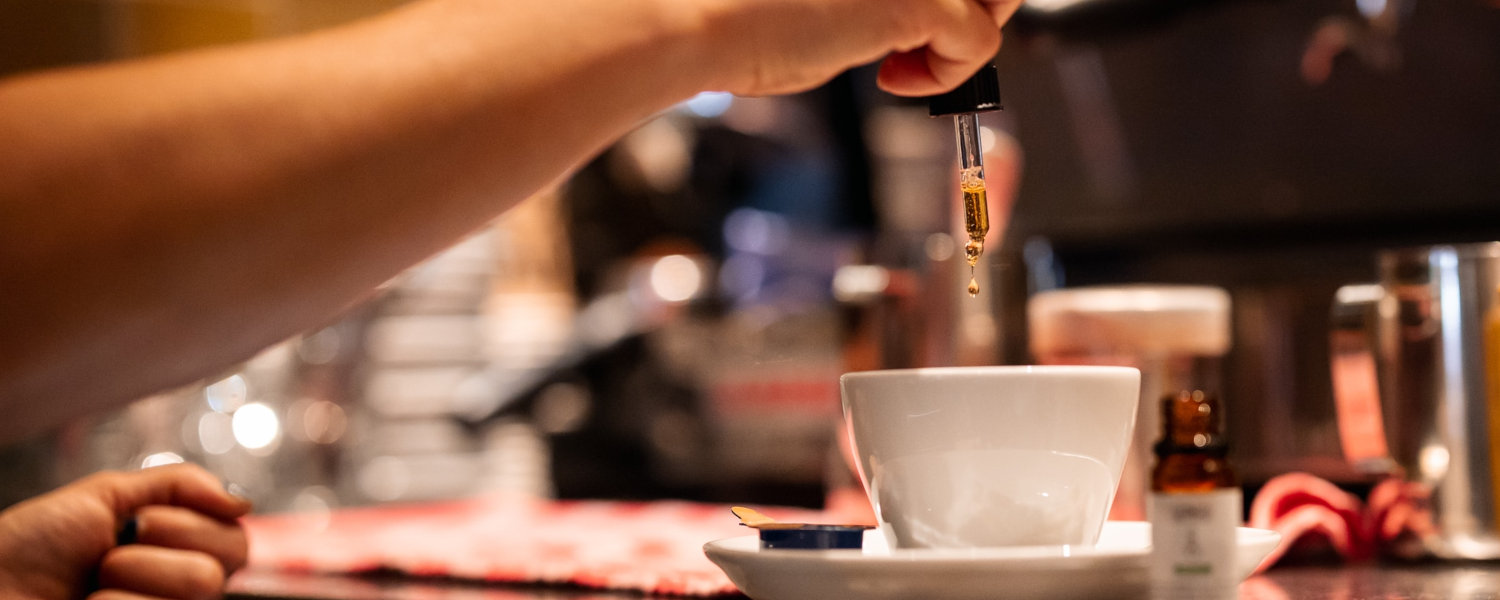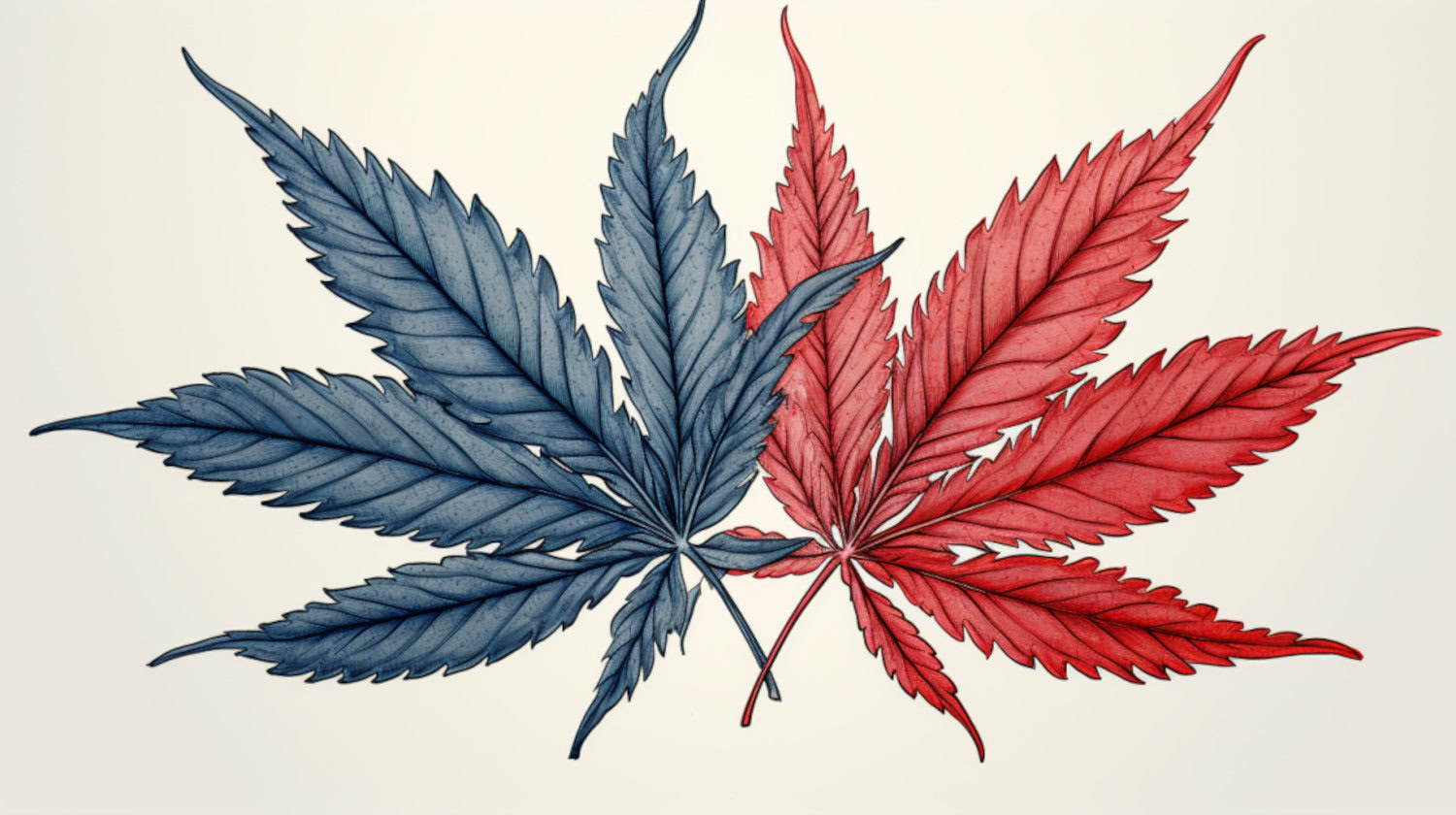In This Article
- What is CBDV?
- Common CBDV Effects and How it Interacts With the Body
- CBDV Benefits: What Can It Help With?
- Anticonvulsant Properties
- Neuroprotective and Anti-Inflammatory Effects
- Pain Management
- Treatment of Nausea and Vomiting
- User-Reported Benefits
- CBDV and Other Cannabinoids
- CBDV vs. CBD
- CBDV vs. THC
- CBDV vs. CBDA
- CBDV vs. THCV
- Tips for Buying CBDV Products
- Look for Reputable Brands with Certificates of Analysis
- Types of CBDV Products
- High CBDV Strains
- Combining with Other Cannabinoids
- Harnessing CBDV’s Potential
- References
In recent years, the popularity of hemp-derived cannabinoids has soared, with CBD (cannabidiol) leading the charge. Known for its numerous health benefits, CBD has become a staple in the wellness industry, addressing issues ranging from anxiety to chronic pain. Its success has paved the way for exploring other beneficial cannabinoids like cannabidiolic acid (CBDA).
In the midst of this burgeoning cannabinoid renaissance, a new player is stepping into the limelight: cannabidivarin (CBDV). Similar to CBD in many ways, CBDV is yet another non-intoxicating cannabinoid found in cannabis plants. While it's not as well-known as CBD, early research and anecdotal evidence suggest that CBDV could have a range of health applications.
What is CBDV?
Cannabidivarin, commonly known as CBDV, is a lesser-known cannabinoid first identified in a benzene extract from a Thai cannabis variety known as "Meao."1 Chemically, it shares a lot of similarities with CBD and THC, yet there are distinct differences that influence its effects and potential applications.
Chemically, CBDV is a propyl analogue of CBD, which means it has a similar molecular structure but with a shorter side chain. This slight molecular variation could be the key to its unique interactions within the body. Both CBDV and CBD are characterized by their low water solubility and poor oral bioavailability, estimated to be around 6% in humans.2
Despite their low solubility, both CBD and CBDV demonstrate relatively rapid absorption in animal models. Peak concentrations of these cannabinoids are typically observed around 2 hours after oral administration. This rapid absorption is an important factor in their pharmacokinetics, influencing how they might be used in therapeutic contexts.
Like CBD, CBDV is non-intoxicating, which means it does not produce the high associated with THC. This aspect makes it an appealing option for those seeking the potential benefits of cannabinoids without the intoxicating effects.
CBDV is most commonly found in C. indica landrace strains of cannabis, which are indigenous varieties that have adapted to their environment over time. These strains, especially those originating from Asia and Africa, have shown higher concentrations of CBDV compared to others.3
The research into CBDV is still in its early stages, but the findings so far are promising. Its beneficial properties might make it suitable for treating certain conditions, potentially offering advantages over CBD in specific contexts.
Common CBDV Effects and How it Interacts With the Body

CBDV is an intriguing cannabinoid with a distinctive interaction profile in the human body, offering potential therapeutic benefits, particularly in neurological and muscular conditions.
Unlike its more famous counterpart, CBDV shows a low affinity for CB1 and CB2 receptors, indicating a distinct mode of interaction within the endocannabinoid system. However, it is a more potent and efficacious agonist at the CB2 receptor.4 These interactions suggest CBDV's potential to modulate physiological responses without the intoxicating effects associated with high-affinity CB1 receptor agonists like THC.
Notably, CBDV has demonstrated significant anti-epileptic properties. In vitro studies show that it can attenuate epileptiform local field potentials in rat brain slices, pointing to a direct effect on neuronal activity. In vivo studies reveal that CBDV significantly reduces seizure activity, particularly in combination with other anticonvulsant drugs. These findings highlight CBDV’s potential as an adjunct treatment in epilepsy management.
CBDV's therapeutic potential extends to conditions like autism spectrum disorder (ASD). In animal models, CBDV has been shown to rescue behavioral and phenotypic changes associated with Rett syndrome, a neurodevelopmental condition related to ASD. It improves motor coordination and memory deficits and can prolong survival while delaying neurological and motor deficits.5
Additionally, research suggests that CBDV targets subcortical excitatory glutamate systems in autistic and neurotypical adults, with varying effects depending on baseline glutamate levels, indicating its nuanced role in neural modulation in those with autism.6
In the context of muscular disorders like Duchenne muscular dystrophy (DMD), CBDV has shown promise in improving muscle quality and locomotion in mouse models. Its anti-inflammatory and pro-autophagic effects could play a role in slowing muscle degeneration, suggesting potential therapeutic applications beyond neurological conditions.
Research also shows that CBDV exhibits antiemetic properties without the psychotropic effects of THC. This makes it a promising candidate for treating nausea, offering a non-intoxicating alternative with similar efficacy.
These preliminary findings indicate that CBDV's interaction with the body is complex and potentially beneficial for a range of conditions. However, more research is needed to understand its effects and therapeutic potential fully.
User experiences shared on platforms like Reddit offer further insights. Individuals report feeling relaxed and calm after using CBDV products, without the drowsiness often associated with other cannabinoids. Users also note improvements in mood, particularly in reducing irritability and anger, suggesting its potential benefits for anxiety and stress management.
CBDV Benefits: What Can It Help With?
As research into CBDV continues to evolve, its potential therapeutic benefits are coming to light. Here's an overview of what current studies suggest about the possible benefits of CBDV:
Anticonvulsant Properties
One of the most significant findings is CBDV's potential in treating epilepsy. Studies indicate that CBDV has strong anticonvulsant properties, particularly effective in managing partial-onset (focal) seizures. This suggests that CBDV might rival or complement CBD in epilepsy treatment. A study highlighted a 40.5% reduction in seizure frequency with CBDV, indicating its potential efficacy, although more research is needed to solidify these findings.7
Neuroprotective and Anti-Inflammatory Effects
CBDV has shown neuroprotective and anti-inflammatory properties in an in vitro model of ischemia-reperfusion. This suggests its potential in treating conditions related to brain injuries, such as stroke, by protecting cells that constitute the blood-brain barrier (BBB).8
Pain Management
While CBDV did not significantly alter pain intensity or the use of additional pain medication in comparison to a placebo in one study, it improves morphine-mediated analgesia by inhibiting morphine-induced glial activation and expression of pro-inflammatory factors. This indicates its potential role in enhancing the effectiveness of existing pain management treatments.9,10
Treatment of Nausea and Vomiting
CBDV also possesses the potential for the treatment of nausea and vomiting, providing a potential non-intoxicating alternative for symptom management in conditions like chemotherapy-induced nausea.
User-Reported Benefits
In addition to these research-backed benefits, anecdotal reports from users of CBDV products suggest a range of other potential benefits. These include improved mood, reduced anxiety, and general well-being, although such claims need further scientific validation.
However, it's important to note that while the current research is promising, it is still in the preliminary stages. Much of the knowledge about CBDV's benefits comes from studies on animal models or limited human trials. More comprehensive research is needed to fully understand the range and extent of CBDV's therapeutic potential.
CBDV and Other Cannabinoids

Cannabinoids have distinct properties and effects. Among these, CBDV has gained attention for its potential therapeutic benefits. Here's how CBDV compares with other popular cannabinoids like CBD, THC, CBDA, and THCV.
CBDV vs. CBD
- Effects and Benefits: Both CBDV and CBD are non-intoxicating cannabinoids. CBDV, while structurally similar to CBD, has shown promise, particularly in the treatment of epilepsy. Medical patients often recognize CBD for its help in treating symptoms like pain, anxiety, and depression, especially in individuals with moderate to severe symptoms.11 Both CBDV and CBD are rapidly absorbed, with peak concentrations observed around 2 hours post-administration.12 Notably, CBDV is 4-fold less active than CBD, indicating a variance in their therapeutic efficacy.13
- Availability and Legality: CBD is more commonly available and found in various forms, including oils and topicals. CBDV's availability is relatively limited due to its presence in specific cannabis strains. The legality of both compounds varies by region.
- Intoxicating Effects: Neither CBDV nor CBD are intoxicating, meaning they do not produce the high associated with THC.
CBDV vs. THC

- Effects and Benefits: THC is known for its intoxicating effects. It is reported and used by many to provide pain relief and to treat conditions like glaucoma and insomnia. It may also relieve anxiety in low doses. CBDV shows promise in areas like epilepsy treatment and possibly in enhancing morphine-mediated analgesia. It is 2-fold less active than THC.
- Availability and Legality: THC's availability is widespread in regions where cannabis is legalized. CBDV's availability is more niche. Legally, THC faces more stringent regulations compared to CBDV.
- Intoxicating Effects: THC is intoxicating, unlike CBDV.
CBDV vs. CBDA
- Effects and Benefits: CBDA, like CBDV, does not bind strongly to CB1 and CB2 receptors and is non-intoxicating. It has been demonstrated in research to have anti-inflammatory and anti-nausea effects. CBDV's notable anti-epileptic properties differentiate it from CBDA.
- Availability and Legality: CBDA is available in various cannabis products but is less prominent than CBD. CBDV is less commonly available. The legality of both compounds is complex and varies by jurisdiction.
- Intoxicating Effects: Both CBDV and CBDA are non-intoxicating.
CBDV vs. THCV
- Effects and Benefits: THCV binds to CB1 and CB2 receptors. It has shown potential in reducing inflammation, treating neurodegeneration in Parkinson’s disease, and regulating blood glucose levels. CBDV stands out for its anti-epileptic properties. THCV, similar to CBDV, exhibits lower activity levels when compared to THC.
- Availability and Legality: THCV is found in small amounts in cannabis flowers, but strains with higher concentrations are being developed. CBDV's availability is more limited. Legality for both cannabinoids is subject to regional laws.
- Intoxicating Effects: THCV can have intoxicating effects, especially in high doses, whereas CBDV is non-intoxicating.
Tips for Buying CBDV Products

When exploring the world of CBDV products, making informed choices can greatly enhance your experience and ensure you receive quality products. Here's a guide to help you navigate your purchase:
Look for Reputable Brands with Certificates of Analysis
Choose products from reputable brands that provide transparency about their sourcing, manufacturing processes, and third-party testing. A certificate of analysis (CoA) from a reputable lab is crucial, as it confirms the product's cannabinoid content and purity. It also helps you steer clear of counterfeit products, such as fake weed cartridges.
Types of CBDV Products
CBDV is available in various forms, including:
- Flower: High CBDV strains offer distinct effects and flavors.
- Tinctures: Ideal for precise dosing and convenient use.
- Isolates: Perfect for those seeking pure CBDV without other cannabinoids.
- Distillates: A versatile form that can be used in various ways.
- Edibles: A discreet and enjoyable way to consume CBDV. Edible options include infused water, gummies, baked goods, and more.
High CBDV Strains
Some strains are specifically cultivated for their high CBDV content. Examples include Medical Mass, Euphoria, Painkiller XL, Royal Medic, Dance World, CBD-Victory, Forbidden V, and Pine Walker. These strains are bred from landrace varieties, often resulting in unique and potent effects.
Combining with Other Cannabinoids
Consider products that combine CBDV with other cannabinoids like CBD. This combination can enhance the overall effect due to the entourage effect, potentially offering a more balanced and effective experience.
By keeping these tips in mind, consumers can make informed decisions and select CBDV products that meet their needs and preferences.
Harnessing CBDV’s Potential
The exploration of CBDV is a testament to the evolving landscape of cannabinoid research, highlighting its remarkable potential in therapeutic applications. From its potential effectiveness in neurological conditions to its non-intoxicating nature, CBDV is shaping up to be a valuable asset in health and wellness. As we continue to uncover the depths of its potential benefits, CBDV is part of a promising journey toward natural and effective treatments.
References
- Russo EB, Marcu J. Cannabis Pharmacology: The Usual Suspects and a Few Promising Leads. In: Advances in Pharmacology. Vol 80. Elsevier Inc.; 2017:67-134. doi:https://doi.org/10.1016/bs.apha.2017.03.004 ↩︎
- Gaston TE, Friedman D. Pharmacology of cannabinoids in the treatment of epilepsy. Epilepsy & Behavior. 2017;70(2017):313-318. doi:https://doi.org/10.1016/j.yebeh.2016.11.016 ↩︎
- McPartland JM, Small E. A classification of endangered high-THC cannabis (Cannabis sativa subsp. indica) domesticates and their wild relatives. PhytoKeys. 2020;144:81-112. Published 2020 Apr 3. doi:10.3897/phytokeys.144.46700 ↩︎
- Walsh KB, McKinney AE, Holmes AE. Minor Cannabinoids: Biosynthesis, Molecular Pharmacology and Potential Therapeutic Uses. Frontiers in Pharmacology. 2021;12. doi:https://doi.org/10.3389/fphar.2021.777804 ↩︎
- Zamberletti E, Gabaglio M, Woolley-Roberts M, Bingham S, Rubino T, Parolaro D. Cannabidivarin Treatment Ameliorates Autism-Like Behaviors and Restores Hippocampal Endocannabinoid System and Glia Alterations Induced by Prenatal Valproic Acid Exposure in Rats. Frontiers in Cellular Neuroscience. 2019;13. doi:https://doi.org/10.3389/fncel.2019.00367 ↩︎
- Pretzsch CM, Voinescu B, Lythgoe D, et al. Effects of cannabidivarin (CBDV) on brain excitation and inhibition systems in adults with and without Autism Spectrum Disorder (ASD): a single dose trial during magnetic resonance spectroscopy. Transl Psychiatry. 2019;9(1):313. Published 2019 Nov 20. doi:10.1038/s41398-019-0654-8 ↩︎
- Brodie MJ, Czapinski P, Pazdera L, et al. A Phase 2 Randomized Controlled Trial of the Efficacy and Safety of Cannabidivarin as Add-on Therapy in Participants with Inadequately Controlled Focal Seizures. Cannabis and Cannabinoid Research. 2021;6(6):528-536. doi:https://doi.org/10.1089/can.2020.0075 ↩︎
- Stone NL, England TJ, O’Sullivan SE. Protective Effects of Cannabidivarin and Cannabigerol on Cells of the Blood–Brain Barrier Under Ischemic Conditions. Cannabis and Cannabinoid Research. 2021;6(4):315-326. doi:https://doi.org/10.1089/can.2020.0159 ↩︎
- Eibach L, Scheffel S, Cardebring M, et al. Cannabidivarin for HIV‐Associated Neuropathic Pain: A Randomized, Blinded, Controlled Clinical Trial. Clinical Pharmacology & Therapeutics. 2020;109(4):1055-1062. doi:https://doi.org/10.1002/cpt.2016 ↩︎
- Wang X, Lin C, Wu S, et al. Cannabidivarin alleviates neuroinflammation by targeting TLR4 co-receptor MD2 and improves morphine-mediated analgesia. Frontiers in Immunology. 2022;13. doi:https://doi.org/10.3389/fimmu.2022.929222 ↩︎
- Rapin L, Gamaoun R, El Hage C, Arboleda MF, Prosk E. Cannabidiol use and effectiveness: real-world evidence from a Canadian medical cannabis clinic. Journal of Cannabis Research. 2021;3(1). doi:https://doi.org/10.1186/s42238-021-00078-w ↩︎
- Anderson LL, Low IK, Banister SD, McGregor IS, Arnold JC. Pharmacokinetics of Phytocannabinoid Acids and Anticonvulsant Effect of Cannabidiolic Acid in a Mouse Model of Dravet Syndrome. Journal of Natural Products. 2019;82(11):3047-3055. doi:https://doi.org/10.1021/acs.jnatprod.9b00600 ↩︎
- Klahn P. Cannabinoids-Promising Antimicrobial Drugs or Intoxicants with Benefits? Antibiotics. 2020; 9(6):297. https://doi.org/10.3390/antibiotics9060297 ↩︎
The information in this article and any included images or charts are for educational purposes only. This information is neither a substitute for, nor does it replace, professional legal advice or medical advice, diagnosis, or treatment. If you have any concerns or questions about laws, regulations, or your health, you should always consult with an attorney, physician or other licensed professional.




